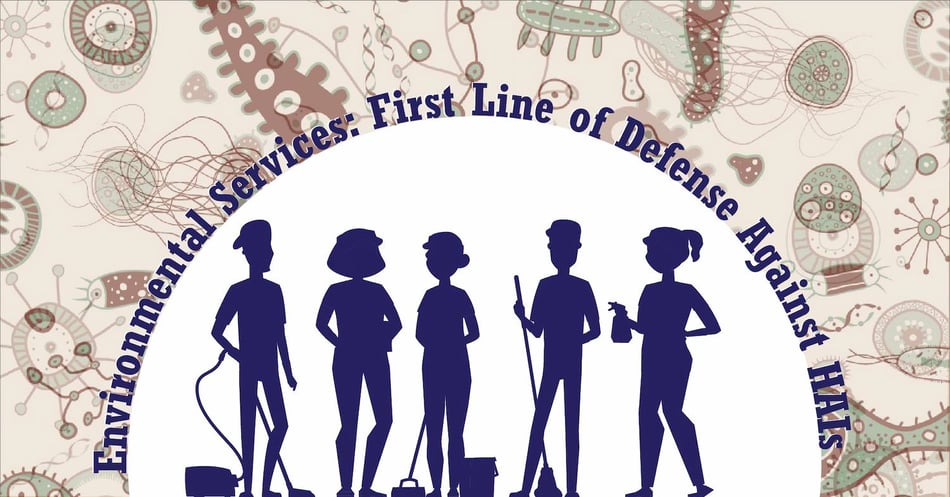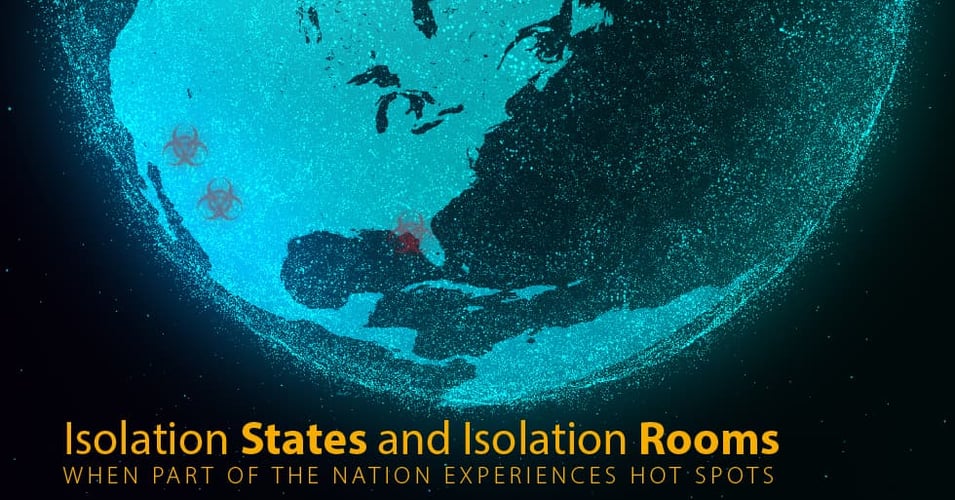Environmental Services: First Line of Defense Against HAIs

Consider a staff position "as important as the medical staff [since] an unclean and unsafe medical facility cannot function properly" (Healthsource, 2018). An employee who is "first line of defense against infections" (HFM, 2018). A worker whose "attention to detail sets the stage for a clean and safe healthcare environment" (ASHE, 2016). In the past, this individual might have been called a custodian, a word that captures responsibility, trust, and safe-keeping. Today, this critical healthcare staff member may be known as an environmental services technician, but the responsibility and trust remain. In today's post, we'll explore the push and pull from different priorities experienced by environmental services personnel.
1. Careful and Quick| One of the challenges faced by the environmental services staff is the need to be methodical, careful, and detail-oriented in order to not miss biological contamination... while also being quick, efficient, and sensitive to time constraints. Effective cleaning requires no cut corners, no short cuts, no sidesteps. This means following correct wet times for a variety of chemicals, replacing cleaning water frequently, all those time-consuming steps that ensure a proper level of hygiene for the patient. However, the demands of a busy hospital put a premium on efficiency, bed turnover and the ability to complete tasks quickly. This pressure can add a level of frustration to both the environmental services employee and their supervisor.
2. Few Educational Requirements Before Hiring and High Knowledge Level Expectations After Hiring | The requirements for becoming an environmental services employee are typically a high school diploma or equivalent. While certification or experience are a plus, they are seldom required. Once the employee begins work, they are expected to quickly internalize not only their job requirements and protocols (which are many and complicated), but also information about infection prevention, dangerous pathogens, chemical handling, and many other complex topics. While these employees rise to the occasion every day, providing critical work for hospitals around the nation, these employees are also among the lowest-paid workers in a healthcare facility. This can lead to rapid staff turnover, requiring additional time and funds for training new hires, while losing out on the benefit of experienced workers with ever-improving abilities.
3. Unobtrusive and Omnipresent | As if cleaning a hospital room well was not difficult enough, these personnel have to accomplish these tasks while monitoring their customer service interactions at all times. A daily struggle faced by environmental services personnel is the pressure to not disturb patients and their visitors while also being responsible for daily, thorough cleaning of every surface in a patient room. Some healthcare facilities provide training dedicated just to this awkward job: Entering an occupied room and performing cleaning duties. This task requires a worker to ask permission to enter, smile, exude calmness, introducing themselves, explaining what they will be doing, listening to any concerns and addressing them or noting them for their supervisors, actually performing the cleaning in a professional way, engaging in any conversation initiated by the patient, inspecting their completed work, and exiting. Add to this list of high-visibility customer service responsibilities the fact that many environmental services personnel speak English as a second language, and you have an even more challenging work environment.
Environmental services personnel and their supervisors work very hard to balance the demands placed upon their shoulders. Thankfully, there are some national programs designed to help. The Centers for Disease Control and Prevention (CDC) for the States Targeting Reduction in Infections via Engagement (STRIVE) program funded the creation and distribution of four modules to support training for environmental services technicians by Association for Professionals in Infection Control and Epidemiology (APIC) subject matter experts and reviewed by subject matter experts from the Association for the Health Care Environment (AHE). The AHE also offers a certification program, enabling high school graduates with 5+ years of experience to achieve the same certification as a colleague with a bachelor's or associate's degree. There are a number of fee-based training programs that hospitals can use for training as well.
To conclude our post, we want to take a moment to recognize the amazing work done by the often unrecognized environmental services employees. We hope this post sheds some light on the challenges they face and the complex responsibilities they carry. So take a moment to thank an environmental services worker for being on the front lines of infection prevention and control and doing their part!
Editor's Note: This post was originally published in July 2019 and has been updated for freshness, accuracy and comprehensiveness.
![EOScu Logo - Dark - Outlined [07182023]-01](https://blog.eoscu.com/hubfs/Eoscu_June2024/Images/EOScu%20Logo%20-%20Dark%20-%20Outlined%20%5B07182023%5D-01.svg)

![[infographic] From Contaminated Rooms to Infected Patients: A Proof in 6 Steps Download and share!](https://no-cache.hubspot.com/cta/default/216314/interactive-178434448899.png)



